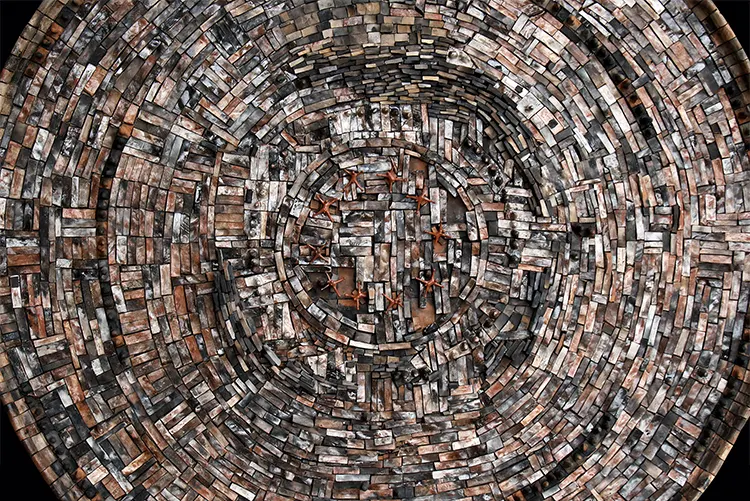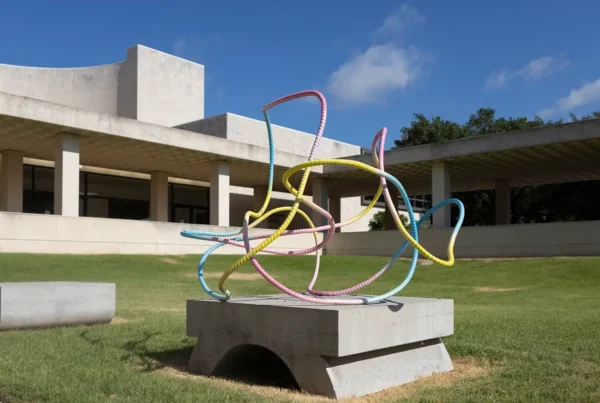“I hold on to my roots for meaning and continuity, integrity and a future. In great art there is a sense of national specificity. It’s valuable when we can talk about American abstraction, Thracian art, the golden age of Spanish painting, or the Italian Renaissance.”
Ivan Kanchev: A Journey Through Touch and Vision
Ivan Kanchev, an artist whose work transcends traditional boundaries, possesses a distinct philosophy that shapes his art. Rooted in a liberal attitude towards life and art, Kanchev’s approach is fundamentally intuitive. He envisions his creations in complete form – with distinct shapes, details, and colors – and then meticulously brings these visions from his mind into reality. This process, devoid of improvisation, relies on a step-by-step following of these mental images, underscoring Kanchev’s commitment to an instinctual creative process. This intuitive foundation extends beyond his artistic creations, influencing his roles in teaching, research, and curatorial projects.
In the early phase of his artistic journey, Kanchev broke new ground by creating art accessible to both sighted and visually impaired audiences. His innovative work in this area emerged from his psychological research on the sense of touch, leading to a synthesis that enriched the tactile art experience. This endeavor not only expanded the boundaries of artistic perception but also inclusively drew in a wider audience, connecting them more intimately with contemporary culture. Kanchev’s approach during this period was not just a mere exploration of art but a redefinition of its universality and accessibility.
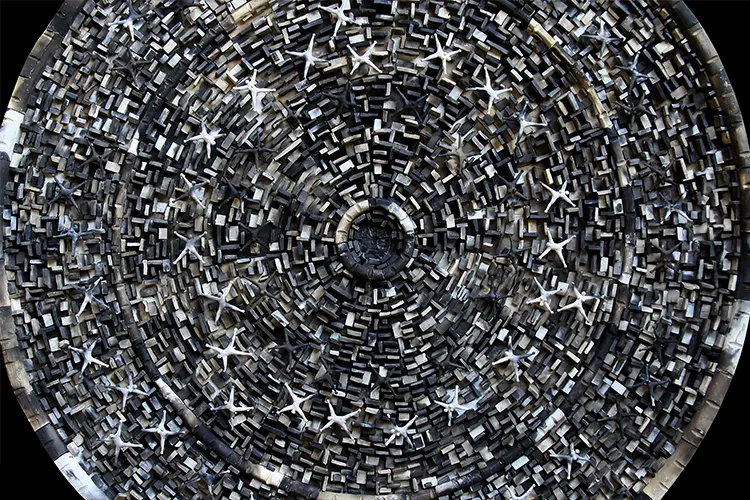
Ivan Kanchev: Evolution of Artistic Expression
As he evolved, Kanchev’s second stage of artistic development saw him resist traditional forms, reflecting his upbringing in the socialist era. This period was characterized by the creation of sculptures, reliefs, and various ceramic structures. Drawing inspiration from natural elements like tree crowns and field grass, he crafted tactilely engaging works. This resistance to monolithic forms and typical construction methods marked a significant departure from the conventional artistic norms of his time.
In his current phase, Kanchev strives to create new, synthetic, and universal forms. These forms are central to his discussions and exhibitions, representing a culmination of his artistic evolution. He emphasizes the importance of maintaining a connection to his roots, believing that great art encapsulates a sense of national specificity. Kanchev’s recent project, “With Tribute to the Thracian Ceramics,” delves into the rich prehistoric culture of Bulgaria. This project does not merely replicate ancient images and motifs but seeks to discover universal principles that can be modernized and made relevant in today’s world. This exploration into Bulgaria’s ancient civilizations, such as the Danube civilization and the Varna Chalcolithic Necropolis, informs his artistic language, integrating expressive elements from the dawn of art into his contemporary creations.
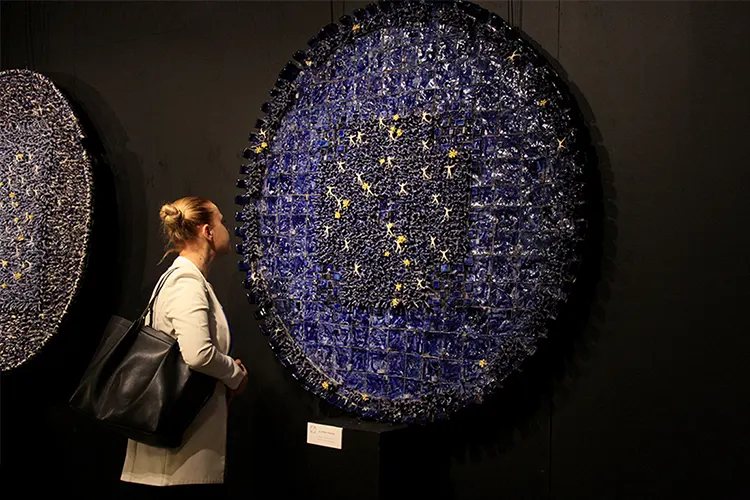
The Artistic Style of Ivan Kanchev: Beyond Conventional Boundaries
Ivan Kanchev’s artistic style defies easy categorization, as he continually seeks to create new forms that blend past, present, and future. His works are multifaceted, encompassing objects, sculptures, reliefs, and more, often conceived as installations incorporating diverse elements like drawings, photographs, and machine parts. They exude a nocturnal, dreamlike quality, reminiscent of visions. This total approach to art-making allows Kanchev to intuitively explore themes of social and philosophical significance. His art challenges viewers to ponder existential questions about human nature, our origins, and our future, as well as our relationship with the environment.
Throughout his career, Kanchev has consistently touched on themes with deep social and philosophical resonance, from the Neolithic era to contemporary concerns. This thematic exploration is not just confined to the subject matter but is also reflected in his technological process. Kanchev’s method of cutting his works into hundreds of fragments for firing, coloring, and reassembling not only demonstrates a unique artistic approach but also offers a philosophical commentary. This technique, echoing the complexity of human existence and the interconnectedness of all things, is a testament to his dedication to challenging conventional artistic norms and pushing the boundaries of creative expression.

Ivan Kanchev: The Artist’s Environment and Inspirations
For Kanchev, the ideal workspace is one that offers peace and unity, transcending specific environments. He adapts to various locations, reflecting his commitment to maintaining the continuity of his creative process. This adaptability was notably demonstrated when he transported one of his works across Bulgaria, indicating his dedication to his art regardless of the setting. Kanchev views the challenge of balancing daily obligations and artistic creation as essential, believing that art, while significant, is not above life itself.
Kanchev’s works often center around the theme of humanity and its contradictions, portraying humans as seekers of happiness in life’s labyrinth. The complexity of his works, composed of numerous fragments, represents the intricate nature of human existence. This approach also influences how he deals with distractions in his workspace, often allowing his works to rest so he can return to them with fresh eyes and dispassionate judgment. When discussing influences, Kanchev emphasizes his self-reliance and closed-system approach, drawing inspiration primarily from his own experiences and internal visions rather than external sources. This independence is evident in his adaptation of ancient Thracian pottery and Neolithic sculpture techniques, now reimagined through a contemporary lens.

Ivan Kanchev: The Resonance of Individual Works
Ivan Kanchev is a dynamic artist, swiftly bringing his imaginative ideas to fruition. His current endeavor involves a deep dive into the art of the First Bulgarian Kingdom, aiming to create a groundbreaking large-scale series. Concurrently, he’s avidly pursuing the “Man, Where Are You? Night Visions” project, pushing its limits to explore the extent of his interpretative abilities and create variations with a distinct message. This experiment is a personal quest to gauge his creative potential.
One of Kanchev’s notable works belongs to the “Man, Where Are You? Night Visions” series, which has captivated both the public and critics. Italian gallerist Angelo Ribezzi offers a thought-provoking interpretation of this work, perceiving it as a representation of life’s paradoxes and existential struggles. According to Ribezzi, Kanchev’s sculpture poignantly depicts a human figure grappling with the chaos and materialism of modern life, resulting in a profound sense of existential crisis.
Kanchev’s artistic prowess is also recognized by academic experts. Professors Emil Popov and Peter Tsanev praise his complex ceramic creations, which symbolize life’s intricate maze. The dynamic spatial composition and compelling allure of these pieces invite viewers to uncover new meanings with each examination. Additionally, Prof. Valentin Angelov commends Kanchev’s groundbreaking contributions to ceramic art, aligning his works with the ethos of innovation. These accolades underscore the diverse and thought-provoking nature of Kanchev’s art, characterized by its ability to challenge established norms and communicate through a symbolic language rooted in emotional memory.
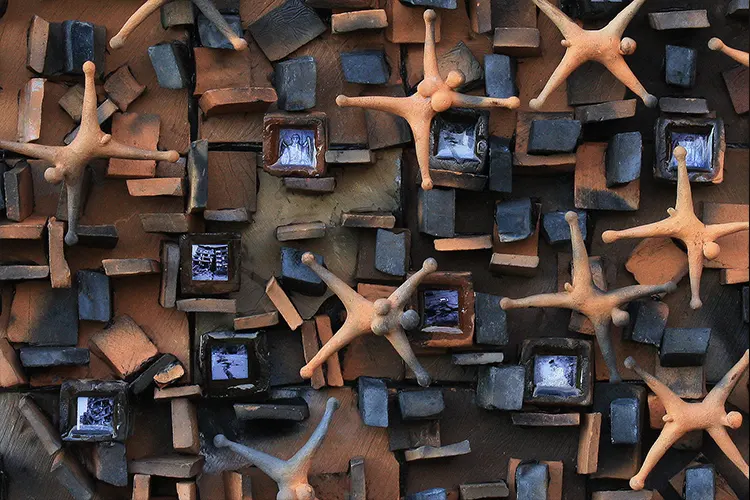
The Path to Ceramics and Future Aspirations
For Ivan Kanchev, ceramics was a medium that seemed to choose him, marking the beginning of a lifelong journey in artistic expression. Despite initial setbacks due to exam anxiety, his eventual enrollment in the art school in Troyan, a ceramic center in Bulgaria, set him on his path. Kanchev’s engagement with ceramics is multifaceted, involving shape and volume creation, color utilization, graphic techniques, and chemical technology. This versatility extends to his inclusion of diverse materials like photographs, soot, resin, and wood in his works. Painting also holds a special place in his creative repertoire, with watercolor and acrylic being mediums he occasionally explores.
Kanchev’s dream project is a reflection of his ambition and the global recognition he seeks for his work. He aspires to hold a solo exhibition in New York, showcasing large-format works that best represent his artistic strengths. This dream highlights his desire to share his unique artistic vision with a broader audience, showcasing the depth and breadth of his creativity on the world stage. Kanchev’s journey from a supportive family environment in Bulgaria to aspiring for international acclaim underscores the universal appeal and profound impact of his art.
